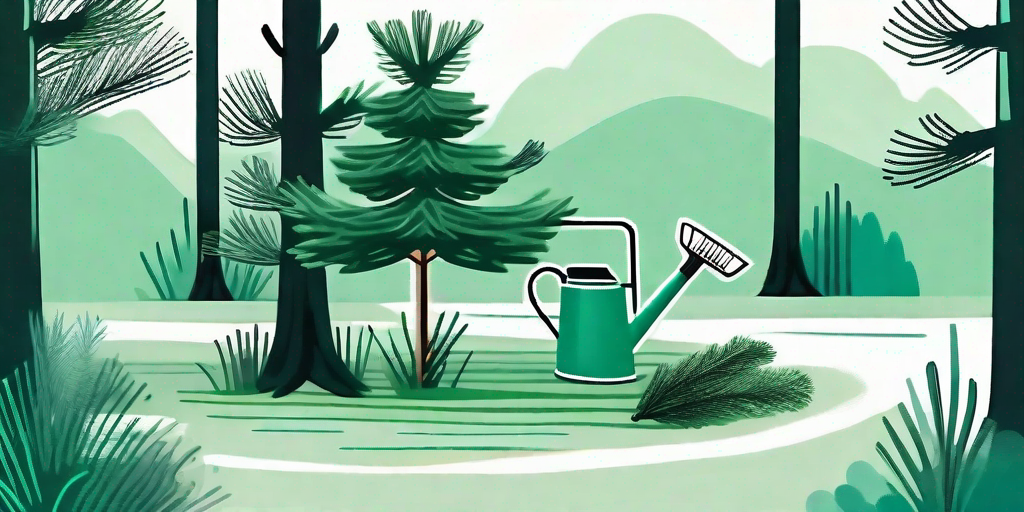
If you've recently found yourself the proud owner of a pine tree (or a whole forest of them), you might be feeling a little stumped (pun intended) about how to care for these majestic evergreens. Fear not, dear reader, because we're about to embark on a journey that will turn you from a novice into a bona fide pine tree whisperer. So, grab your gardening gloves, put on your best lumberjack shirt, and let's get started!
Understanding Your Pine Tree
The Basics
Before we dive into the nitty-gritty of pine tree care, it's important to understand a little bit about these towering beauties. Pine trees are evergreens, which means they keep their foliage year-round. They're also conifers, producing those iconic cones that are perfect for holiday decorations or impromptu games of fetch with your dog.
There are over 100 species of pine trees, each with their own unique characteristics. Some pines, like the Eastern White Pine, can reach heights of up to 80 feet, while others, like the Pinyon Pine, are more modest in size. Regardless of their size, all pine trees share a love for sunlight and well-drained soil.
Identifying Your Pine Tree
Identifying your pine tree is an essential step in providing the best care. The type of pine tree you have will determine its specific needs in terms of sunlight, water, and soil conditions. For example, a Lodgepole Pine thrives in sandy or gravelly soils, while a Scots Pine prefers more acidic conditions.
One of the easiest ways to identify your pine tree is by its needles. Pine needles come in clusters, or fascicles, and the number of needles in each cluster can help you determine the species. For instance, Ponderosa Pines have three needles per cluster, while Eastern White Pines boast five.
How to Care for Your Pine Tree
Watering and Feeding
When it comes to watering your pine tree, less is more. Pine trees are drought-tolerant and can usually get by with the amount of water provided by Mother Nature. However, during particularly dry periods, a good soak every two to three weeks will keep your pine happy and hydrated.
As for feeding, pine trees aren't picky eaters. A slow-release granular fertilizer applied in the spring should do the trick. Just be sure to follow the package instructions to avoid overfeeding.
Pruning and Maintenance
Pruning your pine tree can seem like a daunting task, but it's actually quite simple. The key is to prune during the late winter or early spring when the tree is dormant. This will minimize the risk of disease and pest infestation.
When pruning, focus on removing dead or diseased branches, as well as any branches that are growing too close together. Remember, your pine tree needs room to breathe! And don't forget to give your tree a good once-over for any signs of pests or disease. Early detection is key to keeping your pine tree healthy.
Common Pine Tree Problems and How to Solve Them
Pests
Pine trees can be a magnet for pests like beetles, weevils, and aphids. If you notice small holes in the bark, sawdust at the base of the tree, or a decline in the tree's health, you may have a pest problem. In this case, a good insecticide or a call to your local arborist may be in order.
Diseases
Pine trees are also susceptible to a variety of diseases, including root rot, needle blight, and rust. Signs of disease can include yellowing needles, reduced growth, and premature needle drop. If you suspect your tree is sick, it's best to consult with a professional who can diagnose and treat the problem.
Frequently Asked Questions
- How often should I water my pine tree?
Generally, pine trees can get by with the water provided by rainfall. However, during dry periods, a good soak every two to three weeks is beneficial.
- When should I prune my pine tree?
Pruning should be done in late winter or early spring when the tree is dormant.
- What kind of soil do pine trees prefer?
Pine trees prefer well-drained soil. The specific type of soil (sandy, acidic, etc.) can depend on the species of pine.
Conclusion
And there you have it, a comprehensive guide to caring for your pine trees. With a little knowledge and a bit of elbow grease, you'll have your pines thriving in no time. Remember, every pine tree is unique and requires a personalized touch. So, get out there and start bonding with your trees. Happy gardening!















